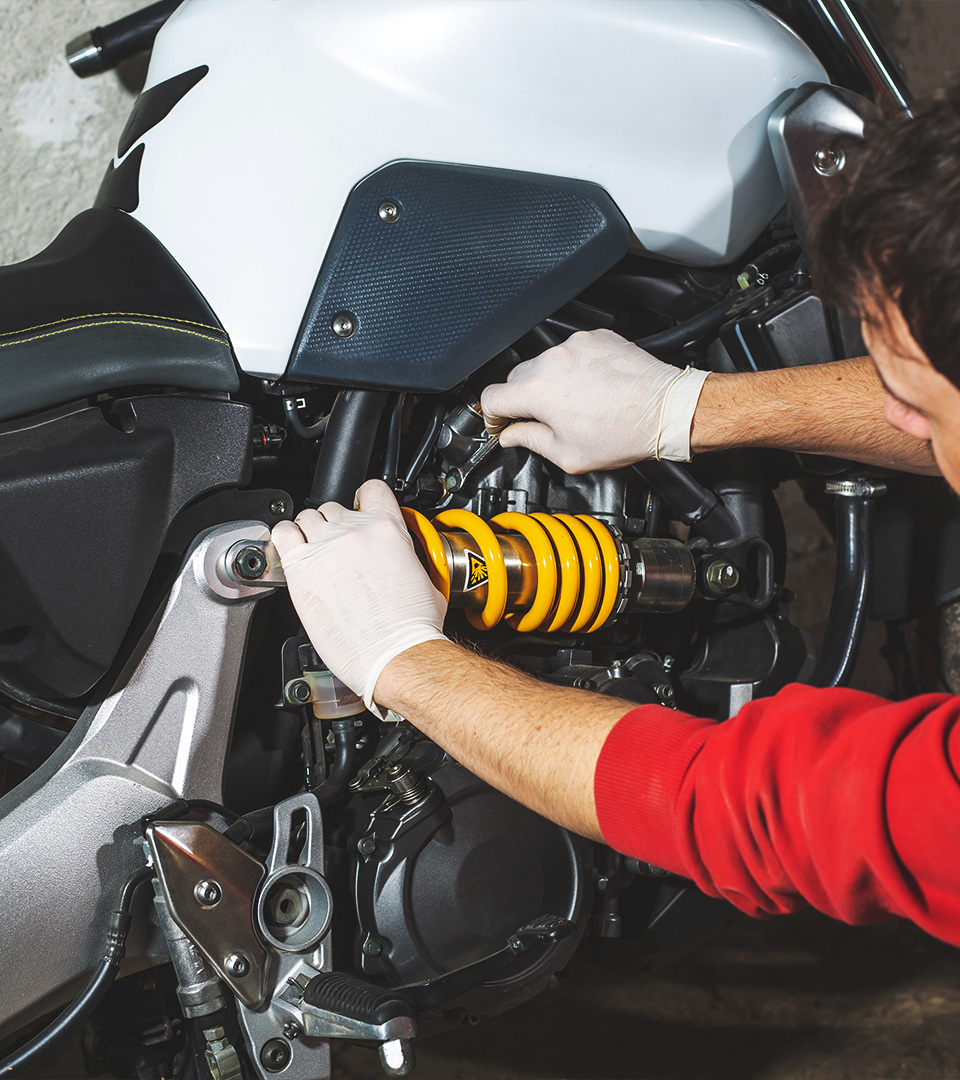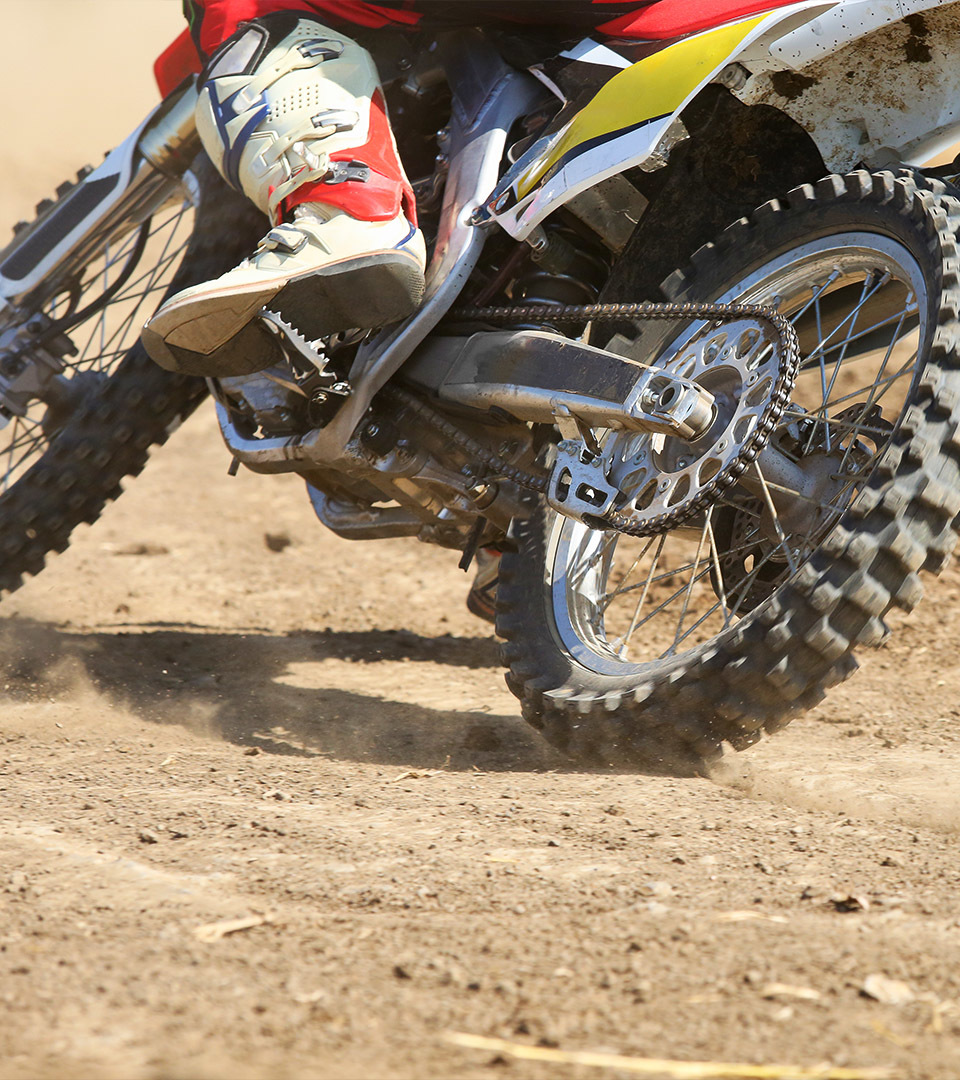12
2021
-
11
How to set the preload of the shock absorber is explained in detail.
Before, we talked about changing the spring of the front shock absorber, changing the oil seal, and changing the rear shock absorber. But we should be clear about what these are. The answer is that we need to get a suspension setting that suits our weight.
First of all, let's talk about the importance of shock absorber setting. Many things on motorcycles affect the whole body. Don't think that your shock absorber only determines your comfort when crossing ditches and ridges. Slow rebound of the shock absorber, insufficient preload, and too soft will cause your tires to fail to grip the ground. It can also cause your braking performance to drop or even power output to be weak. The so-called tires of many cars do not have enough grip and the brakes do not work. In fact, most of them have something to do with the inappropriate adjustment of shock absorbers. Of course, the shock absorber also greatly affects your cornering performance, tracking and so on.
Today, let's talk about the most basic preload settings. First of all, what is preload? Preload is simply the amount that you will naturally press down when you get on the bus with full equipment. First of all, don't think that the smaller the amount, the better. You must have a certain margin to resist rebound.
The preload of the shock absorber is set according to your weight, so you need to fully equip the test. What you wear on your daily bike is what you need to support. It is best to carry a box on your daily car. Of course, it is best to reach the quality of the car's preparation, that is, the state with enough oil and water. The data obtained in this way will be relatively accurate.
Then I want to understand two concepts. One is race sag. Although it literally means race sinking, I think it is more accurate to call a human car to preload. Just like the literal meaning, this value is the amount of sinking after your shock absorber plus your people. The maximum shock-absorbing stroke of an empty car minus the shock-absorbing stroke after you get on the car is race sag.
Another concept is called static sag static preload, which is the compression value of the shock absorber on the ground minus the maximum stroke of the shock absorber.
The data used by the general street car sports car is a set of general reference values given by ohlins, static sag: front wheel 15-30mm. Rear wheel 10-20mm. Race sag: front wheel 35-50mm. Rear wheel 25-40mm.
I can also give a set of demonstration data for off-road vehicles. 125-450cc displacement level, front and rear wheels static sag:30mm( -5). Rear wheel race sag:100mm( -5). Front wheel race sag:80mm( -5). Of course, many manufacturers of off-road vehicles will indicate these in the manual, and the standards given by the manufacturers shall prevail.
Another group is Honda's data for adv models. The ideal preload height given is static sag:10% and race sag:30%.
Next, how do we use these data to measure whether the shock absorber is suitable for ourselves and adjust it. We take you step by step operation. I am naked and 172 tall, and my weight is 175-190, depending on how much I have been doing recently. the model is a honda cb190.
First of all, we must ensure that when the car is cold, the hot car will cause the sag data to be inaccurate.
We need three sets of data for each of the front and rear wheels: F1, the maximum length of the front shock absorber. F2, Front shock absorber static length. F3, front shock absorber man car length. R1, maximum length of rear shock absorber. R2, rear shock absorber static length. R3, Rear suspension man-car length.
Next, we will enter the measurement phase. I will briefly use the data of my own car as an example.
How to set the preload of the shock absorber is explained in detail.
F1, because the front shock absorber is a linear structure, basically the change of the shock absorber is the change of the whole shock absorber, so we can only measure the variable of the shock absorber. When F1, pay attention to the fact that the tires should be off the ground. If there is a big support, you can press the rear of the car to let the front wheels off the ground. If not, you can raise the roof by bracing it up. Of course, you have to have a jack to lift the car platform and so on. F1 = 130mm.
R1, the same as the front wheel, requires the rear wheel to leave the ground. The point of the rear wheel volume is to start from the rear axle and find any reference point vertically upward. It can be the back seat, the taillight, the rear guard, it is best to find a corner as a reference. You can also tape yourself a reference point. My R1 = 577mm.
F2, the front suspension can be tied with a cable tie with a ring as a reference point. It should be noted that the value is taken at the upper edge of the tie. When we measure the static value, we need to vertical the car instead of supporting it. To make the weight of the car vertically downward to take this value, you can use your hand to press it a few times before measuring, and let him rebound before measuring. My F2 = 102mm. R2, the measurement method is the same as F2. The measuring point should be the same as R1. In fact, when measuring R1, we can directly fix one end of the ruler on the rear axle and measure it upward. My R2 = 563mm.
F3, R3, this link should pay special attention to the feet off the ground, so we may need three people to operate, one person to correct the car, one person to measure, one person to get on the car. My F3 = 85mm,R3 = 518mm.
We got the following data:
F1:130mm
F2:102mm
F3:85mm
R1:577mm
R2:563mm
R3:518mm
After getting the data, we do four simple subtractions:
F1-F2 = front static sag ,130-102=28, the static preload of the front wheel is 28mm.
R1-R2 = rear static sag,577-563=14, rear static preload is 14mm.
F1-F3 = front race sag,130-85=45, and the pre-load of the front wheel is 45mm.
R1-R3 = rear race sag,577-518=59, and the preload of the rear-wheel human vehicle is 59mm.
We end up with all the sag values. Then use this value to compare the parameters.
Front wheel static preload 15-30mm. We got 28, within range.
Rear wheel static preload 10-20mm. We got 14, also within range.
Preloading of front wheel man-car 35-50mm. We got 45, in range.
Preloading 25-40mm for the rear wheel. What we got is 59, which is beyond 19, which means we need to increase the rear wheel preload to make it harder at this time.
So what does static preload mean? Is your spring stiffness right for your weight. Static preload should be combined with human and vehicle preload. If your human vehicle preload is within range, and your static preload is severely insufficient, your springs cannot support your weight. Even if you use the method of squeezing the spring to adjust the preload of the human vehicle to your appropriate value, the toughness and elasticity of your spring have not reached the use standard. This time you need to replace the spring or shock absorber, and then do the adjustment.
For example, myself, my front shock absorber is the result of replacing the spring. This set of data for my rear shock absorber is the value after the original shock absorber is adjusted to the maximum hardness. Which means my rear shock is too soft for my weight. Rear suspension spring in our country is basically unlikely to achieve things. So I should choose to replace the shock absorber that is more suitable for me.
Because the shock spring has a relative load-bearing pounds limit, the weight that each shock absorber can accommodate is limited. Most vehicles can only adapt to the vast majority of people of moderate weight. Knights who are too heavy and too small can actually adjust themselves. If the appropriate value is not adjusted, replacing the shock absorber or spring is a necessary safety measure.
Some people say I don't get off the track again. In fact, you can also see that no matter which manufacturer gives the value, it is a range, such as 25-40,35-50. This is to ensure that the shock absorber can be within a reasonable working range. Whether it is biased towards 25 or 40 requires your own feelings. Therefore, in most cases, the adjustment of shock absorbers still needs to be clear about their own needs. I hope the street is more comfortable, it can be off 40, and it needs better support and cornering performance, it can be off 25. Only for the car that has made a reasonable preload setting, can we truly realize the riding feeling, safety and control of this car. This is also a very popular common sense in Europe, America and even Taiwan.
If your shock absorber can adjust the damping, it will be more perfect. But I also want to say that the more types of tunes, the better. A good shock absorber can adjust preload, rebound damping, and downforce damping. Even some shock absorbers can adjust fast damping and slow damping. And you're not a suspension engineer, and most people don't hire a suspension engineer. You should know that of all the technicians in each team, the highest salary is the suspension engineer. Even most teams hire teams of factory technicians to tune up the cars. Fine adjustment of shock absorbers is not something that ordinary people can do. And more detailed adjustment is more for the track road grip, temperature, moderation and other objective conditions of the field, each set separately.
When we adjust the damping everyday, we can probably follow such a principle. Relatively slow damping can bring us some comfort. Relatively faster damping will give me a clear sense of road, better flexibility and grip. Most of the specific adjustment methods are to adjust the damping to the intermediate value, and then make a little adjustment according to your riding experience.
Related News







